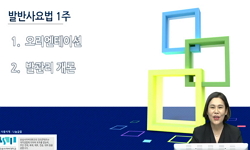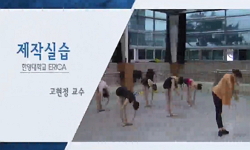J. S. LEE, Y. J. KIM, S. B. PARK. A Study of In-sole Plantar Pressure Distribution in Functional Tennis Shoes. Korean Journal of Sport Biomechanics, Vol. 14, No. 3, pp. 99-118, 2004. The aim of this study is to evaluate tennis shoes`s plantar pressure...
http://chineseinput.net/에서 pinyin(병음)방식으로 중국어를 변환할 수 있습니다.
변환된 중국어를 복사하여 사용하시면 됩니다.
- 中文 을 입력하시려면 zhongwen을 입력하시고 space를누르시면됩니다.
- 北京 을 입력하시려면 beijing을 입력하시고 space를 누르시면 됩니다.

기능성 전문테니스화의 족저압력분포 분석 = A Study of In-sole Plantar Pressure Distribution in Functional Tennis Shoes
한글로보기https://www.riss.kr/link?id=A45043131
- 저자
- 발행기관
- 학술지명
- 권호사항
-
발행연도
2004
-
작성언어
-
- 주제어
-
KDC
600
-
등재정보
KCI등재
-
자료형태
학술저널
- 발행기관 URL
-
수록면
99-118(20쪽)
-
KCI 피인용횟수
19
- DOI식별코드
- 제공처
-
0
상세조회 -
0
다운로드
부가정보
다국어 초록 (Multilingual Abstract)
J. S. LEE, Y. J. KIM, S. B. PARK. A Study of In-sole Plantar Pressure Distribution in Functional Tennis Shoes. Korean Journal of Sport Biomechanics, Vol. 14, No. 3, pp. 99-118, 2004. The aim of this study is to evaluate tennis shoes`s plantar pressure distribution in tennis prayers and to determine the influence of the shoe on various tennis movements. When investigating the biomechanics of movement in tennis, one of the first things to do is to understand the movement patterns of the sport, specifically how these patterns relate to different tennis shoes. Once these patterns are understood, footwear company can design tennis shoes that match the individual needs of tennis players. Plantar pressure measurement is widely employed to study foot function, the mechanical pathogenesis for foot disease and as a diagnostic and outcome measurement tool for many performance. Measurements were taken of plantar pressure distribution across the foot and using F-Scan(Tekscan Inc.) systems respectively. The F-Scan system for dynamic in-shoe foot pressure measurements has enabled us to assess quantitatively the efficacy of different types of footwear in reducing foot pressures. The Tekscan F-Scan system consists of a flexible, 0.18mm thick sole-shape having 1260 pressure sensors, the sensor insole was trimmed to fit the subjects` right, left shoes. For this study 4 university male, high level tennis players were instructed to hit alternated forehand stroke, backhand stroke, forehand volley, backhand volley, smash, service movement in 4 different tennis shoes. 1. When impact in tennis movement, peak pressure distribution of landing foot displayed D>C>B>A, A displayed the best low pressure distribution. A style`s tennis shoes will suggest prayer with high impact. If prayer with high impact feeling during pray in tennis wear A style, it will decrease injury, will have performance improvement. 2. When impact in tennis movement, plantar pattern of pressure distribution in landing foot displayed B>A>C>D in stability performance. During tennis, prayer want to stability movement suggest B style tennis shoes when tennis movement impact keep stability of human body. B style tennis shoes give performance improvement 3. When impact in tennis movement, plantar pattern of center of force(C.O.F.)trajectory in landing foot analyzed this : 1) When stroke movement and volley movement in tennis, prayer better to rearfoot movement. 2) when service movement, prayer midfoot strike movement. 3) when smash movement, prayer have forefoot strike movement.
참고문헌 (Reference)
1 박승범, "클레이코트용 고기능성 테니스화 개발을 위한 생체역학적 연구" 22-25, 2001
2 박승범, "클레이코트용 고기능성 테니스화 개발을 위한 생체역학적 연구" 22-25, 2001
3 김준환, "족저압 측정기를 이용한 신발뒷굽 형태에 따른 보행시 족저압분포에 관한 연구" 8-17, 1995
4 김준환, "족저압 측정기를 이용한 신발뒷굽 형태에 따른 보행시 족저압분포에 관한 연구" 8-17, 1995
5 김석관, "신발산업의 기술 혁신패턴과 전개방향" 18-41, 2000
6 김석관, "신발산업의 기술 혁신패턴과 전개방향" 18-41, 200018-41
7 부산테크노파크, "신규 검사 규격 시험 방법" 부산테크노파크 2004
8 부산테크노파크, "신규 검사 규격 시험 방법" 부산테크노파크 2004
9 임기용, "런닝 및 점핑시 충격으로 인한 족저압 특성 평가" 대한설비관리학회 07 (07): 6-88, 2002
10 임기용, "런닝 및 점핑시 충격으로 인한 족저압 특성 평가" 대한설비관리학회 07 (07): 6-88, 2002
1 박승범, "클레이코트용 고기능성 테니스화 개발을 위한 생체역학적 연구" 22-25, 2001
2 박승범, "클레이코트용 고기능성 테니스화 개발을 위한 생체역학적 연구" 22-25, 2001
3 김준환, "족저압 측정기를 이용한 신발뒷굽 형태에 따른 보행시 족저압분포에 관한 연구" 8-17, 1995
4 김준환, "족저압 측정기를 이용한 신발뒷굽 형태에 따른 보행시 족저압분포에 관한 연구" 8-17, 1995
5 김석관, "신발산업의 기술 혁신패턴과 전개방향" 18-41, 2000
6 김석관, "신발산업의 기술 혁신패턴과 전개방향" 18-41, 200018-41
7 부산테크노파크, "신규 검사 규격 시험 방법" 부산테크노파크 2004
8 부산테크노파크, "신규 검사 규격 시험 방법" 부산테크노파크 2004
9 임기용, "런닝 및 점핑시 충격으로 인한 족저압 특성 평가" 대한설비관리학회 07 (07): 6-88, 2002
10 임기용, "런닝 및 점핑시 충격으로 인한 족저압 특성 평가" 대한설비관리학회 07 (07): 6-88, 2002
11 Nigg, "The influence of playing surfaces on the load on the locomotor system and on football and tennis injuries" 375-385, 1988
12 Nigg, "The influence of playing surfaces on the load on the locomotor system and on football and tennis injuries" 375-385, 1988
13 M, "The influence of different shoe constructions ondiscomfort and pain in tennis International Journal of Sport Biomechanics" 149-153, 1986
14 M, "The influence of different shoe constructions ondiscomfort and pain in tennis International Journal of Sport Biomechanics" 149-153, 1986
15 A, "The effect of speed on leg stiffness and joint kinetics in human running" 32 : 1349-1353, 1999
16 A, "The effect of speed on leg stiffness and joint kinetics in human running" 32 : 1349-1353, 1999
17 노정석, "Parotec System을 이용한 족저압 측정의 신뢰도" 35-37, 2001
18 노정석, "Parotec System을 이용한 족저압 측정의 신뢰도" 35-37, 2001
19 Human Kinetics, "Neuromechanical Basis of Kinesiology" e (e): 16-20, 1988
20 "Neuromechanical Basis of Kinesiology" Human Kinetics e (e): 16-20, 1988
21 Bahamonde, "Kinematic analysis of the open and square stance forehand" 30 (30): 29-, 1998b
22 Bahamonde, "Kinematic analysis of the open and square stance forehand" 30 (30): 29-, 1998b
23 문혜원, "F-scan system을 이용한 정상인의 보행시 족저압 분포" 20 : 289-294, 1995
24 문혜원, "F-scan system을 이용한 정상인의 보행시 족저압 분포" 20 : 289-294, 1995
25 Bates, "Comment on the influence of running velocity and midsole hardness on external impact forces in heel-toe running Journal of Biomechanics 22" 1989
26 Bates, "Comment on the influence of running velocity and midsole hardness on external impact forces in heel-toe running" 963-965, 1989
27 Mann, "Biomechanics of Running In Symposium on the foot and leg in running sports" Mosby Co; 1-29 1980
28 Mann, "Biomechanics of Running In Symposium on the foot and leg in running sports" Mosby Co; 1-29 1980
29 Garcia, "A study of the discomfort associated with tennis shoes" 2-15, 2002
30 Garcia, "A study of the discomfort associated with tennis shoes" 2-15, 2002
동일학술지(권/호) 다른 논문
-
- 한국운동역학회
- 김희수 ( Hee Su Kim )
- 2004
- KCI등재
-
보행 시 연령에 따른 하지 관절 내 운동학적 협응과 제어
- 한국운동역학회
- 이경옥 ( Kyung Ok Lee )
- 2004
- KCI등재
-
MBTI 검사지를 이용한 선호지표별 보행변수의 비교 분석
- 한국운동역학회
- 박성현 ( Sung Hyun Park )
- 2004
- KCI등재
-
- 한국운동역학회
- 심태용 ( Tae Yong Shim )
- 2004
- KCI등재
분석정보
인용정보 인용지수 설명보기
학술지 이력
| 연월일 | 이력구분 | 이력상세 | 등재구분 |
|---|---|---|---|
| 2022 | 평가예정 | 계속평가 신청대상 (계속평가) | |
| 2021-12-01 | 평가 | 등재후보로 하락 (재인증) |  |
| 2018-01-01 | 평가 | 등재학술지 유지 (등재유지) |  |
| 2015-01-01 | 평가 | 등재학술지 유지 (등재유지) |  |
| 2011-01-01 | 평가 | 등재학술지 유지 (등재유지) |  |
| 2009-01-01 | 평가 | 등재학술지 유지 (등재유지) |  |
| 2007-01-01 | 평가 | 등재학술지 유지 (등재유지) |  |
| 2004-01-01 | 평가 | 등재학술지 선정 (등재후보2차) |  |
| 2002-01-01 | 평가 | 등재후보학술지 선정 (신규평가) |  |
학술지 인용정보
| 기준연도 | WOS-KCI 통합IF(2년) | KCIF(2년) | KCIF(3년) |
|---|---|---|---|
| 2016 | 0.76 | 0.76 | 0.75 |
| KCIF(4년) | KCIF(5년) | 중심성지수(3년) | 즉시성지수 |
| 0.79 | 0.68 | 0.864 | 0.14 |




 ScienceON
ScienceON KISS
KISS




